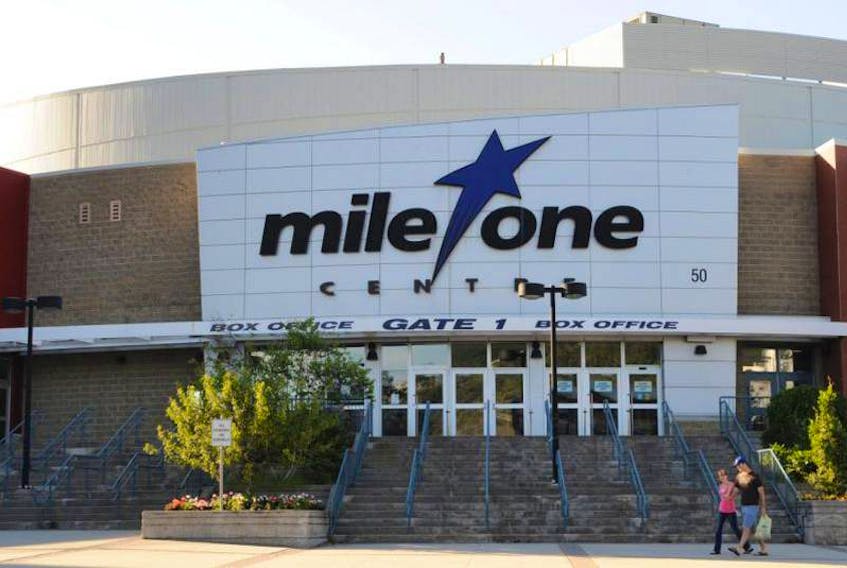There’s a lot of trash talk back and forth about Mile One Centre in St. John’s.

Under the umbrella of St. John’s Sports and Entertainment (SJSE), the stadium seems to operate at a loss, whether or not it has anchor sports teams.
Some people argue the that the subsidy the city pays to its affiliated corporation is worth it, bringing business to the downtown. Others, who don’t use the facility or go to games, wonder why their tax dollars go to pay for other people’s entertainment.
Sometimes, it seems that the more the facility is open, the more money it loses. Its balance sheet in 2017, for example, pointed out that, overall, SJSE spent $9 million in order to make total revenues of $7 million. This year, the city’s chipping in $2.9 million as an operating grant to make up the expected shortfall.
Right now, the St. John’s Edge and the St. John’s Growlers seem to be involved in the usual battle with SJSE over lease costs and money, complete with the usual implied threats that the teams will just move if they can’t get a good enough deal.
But here’s a different kind of trash talk.
In many parts of St. John’s, you’ve got one.
And on garbage day, you roll it out to the end of the driveway, a big truck comes, picks it up, empties it and sets it back down.
It’s the black plastic rolling trash bin that’s used in areas serviced by automatic garbage collection trucks.
And, thanks to information freely and openly provided by the City of St. John’s, you can reverse-engineer the exact cost to the taxpayer for each individual black bin: $76.22. (Lose yours, though, and the city will charge you $90 for a new one.)
You can see the name and city email of the purchasing representative for the city.
You can see Rehrig Pacific Co’s winning bid: $3,048,650. You can see the losing bids. You can see everything about the carts, from the thickness of the resin in the containers to the way they are made, to the weight they have to hold. You can see details of the radio-frequency identification tracking system used to reunite wayward carts with homeowners.
And it’s not just information on the garbage carts that is an open book.
In fact, bid documents for the City of St. John’s actually warn prospective bidders that all aspects of their bids will be made available publicly, unless the bidders present clear, cohesive arguments in advance for keeping information confidential.
A recent bid for garbage truck parts required individual pricing for every item on the city’s list. Not only that, but the bid documents included blank contracts that showed all of the city’s expectations on everything from warranty to delivery.
So, why don’t we get the same kind of detail ahead of time on the deals the city’s corporation strikes with sports teams?
The city’s taxpayers need to know up front what kind of deal we’re getting into, especially when we’re negotiating with what’s essentially a sole-source supplier.
When you buy an expensive hotdog, who gets that money? How are the profits divided up? What are the profits? We’re being asked to cough up millions of dollars every year to prop up Mile One — yet we don’t always know in advance what’s on the table.
After the fact, information can sometimes be found through freedom of information requests — like, for example, the fact that the former IceCaps organization received 20 per cent of the gross food and beverage sales at facilities operated by SJSE on the concourse level of the rink, and 20 per cent of the profits of all the other food and beverage concessions at the arena on every game night. The IceCaps organization also got all advertising and suite sales revenues, and all ticket revenues, paying a flat rental fee to SJSE for the facility. (You can even see where they came back and argued that they should have their rental fees cut in half.)
But the details come out long after the deals are done — and right now, even when the city expressly calls money it pays to SJSE to help sports teams a subsidy, we still can’t all agree that it is what that money should actually be called.
I’m not saying that running a sports team is cheap, or that it is necessarily even profitable.
I’m just saying the city’s taxpayers need to know up front what kind of deal we’re getting into, especially when we’re negotiating with what’s essentially a sole-source supplier.
Let’s have all of the facts on the table — from both sides — before the next deal is done.
Russell Wangersky’s column appears in 36 SaltWire newspapers and websites in Atlantic Canada. He can be reached at [email protected] — Twitter: @wangersky.
MORE FROM RUSSELL WANGERSKY









